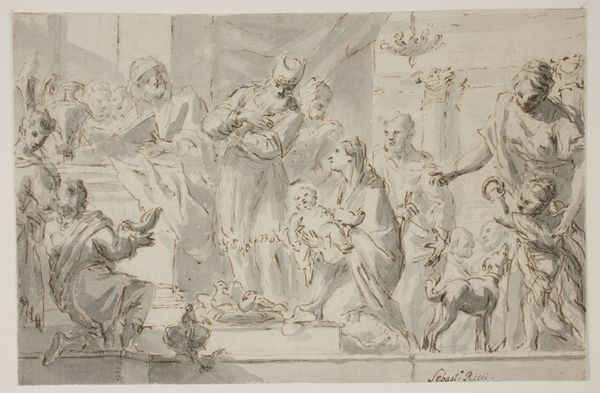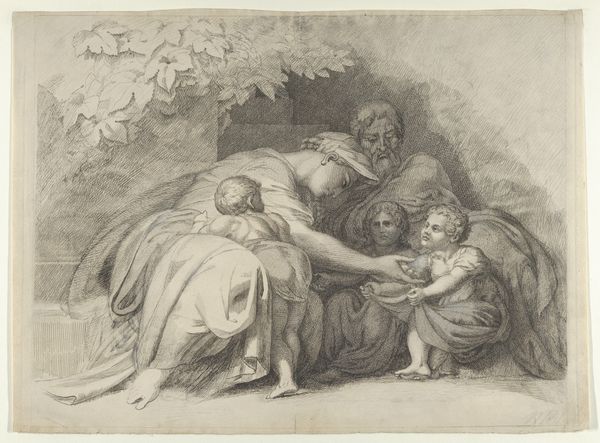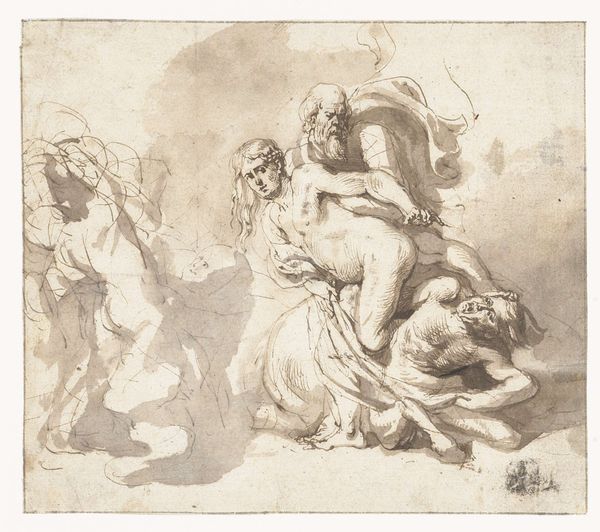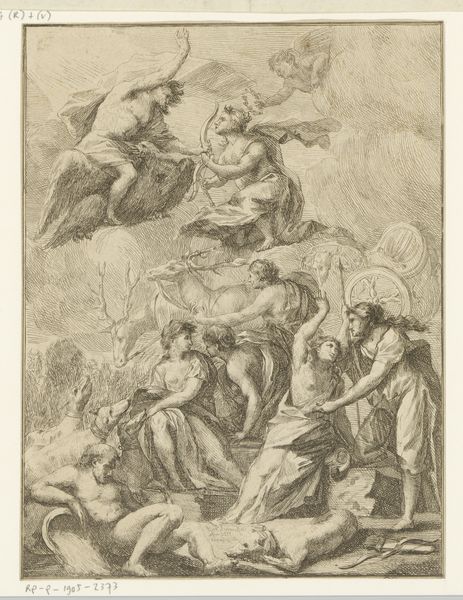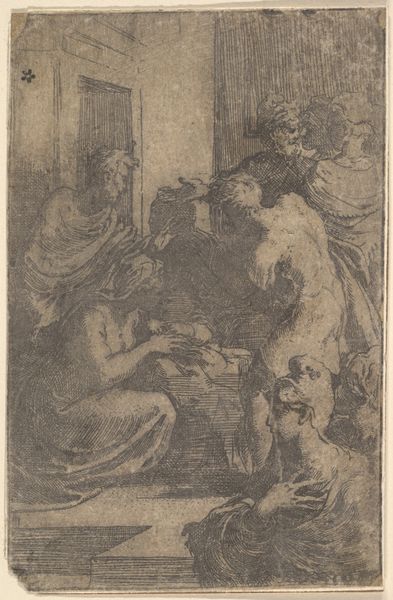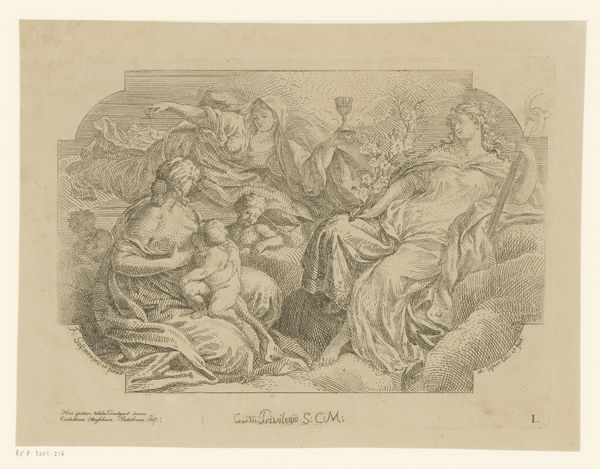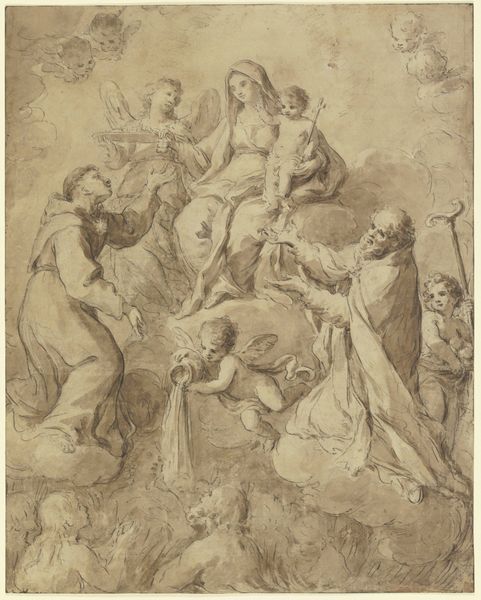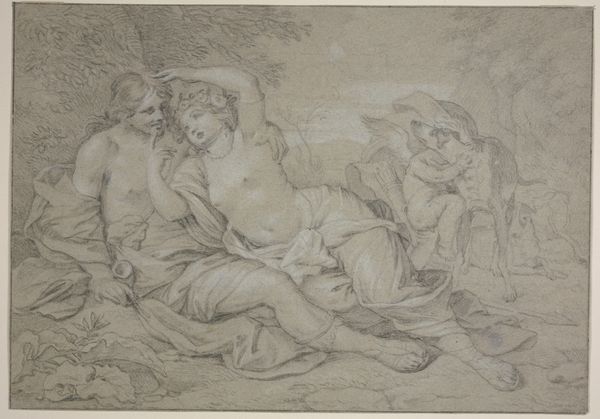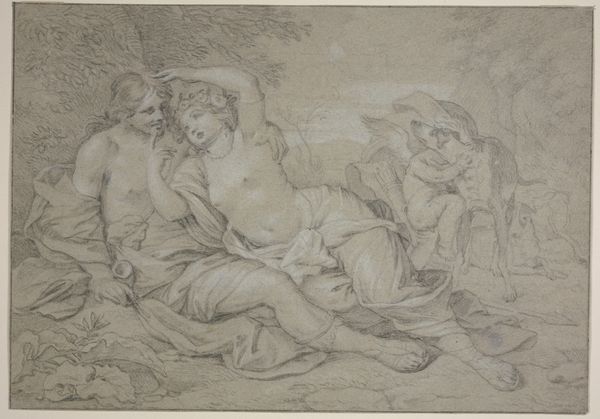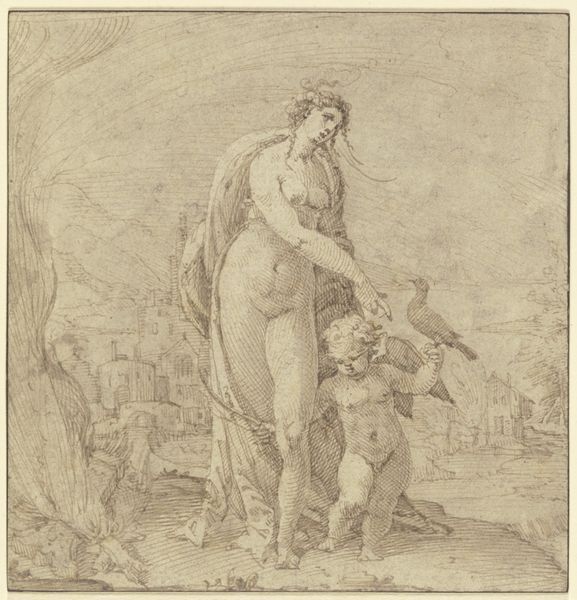
Pietà, the dead Christ supported by the Virgin, putti at the left 1628 - 1651
0:00
0:00
drawing, print, intaglio, engraving
#
drawing
#
baroque
# print
#
intaglio
#
landscape
#
figuration
#
history-painting
#
engraving
Dimensions: Sheet: 9 1/16 × 9 7/16 in. (23 × 24 cm)
Copyright: Public Domain
Curator: Just look at this print—such potent sorrow rendered with stark lines. It’s titled Pietà, the dead Christ supported by the Virgin, putti at the left, by Joost de Pape, dating sometime between 1628 and 1651. Editor: It is somber, yes, but those etched lines also lend it a raw, textural quality. You can almost feel the coolness of the stone against Christ’s body. The Virgin’s draped clothing, the very deliberate way the lines form those curves… beautiful. Curator: And classically Baroque, wouldn't you agree? It leans into high drama. Think about where an image like this would circulate, too; consider the function. This wasn’t just decorative, it played a role in shaping religious thought and feeling during a turbulent period. Editor: The means of its making speaks volumes, too. Look at the uniformity; we're seeing the industrialization of religious iconography! Reproducible grief available to the masses through skilled labor and printing technology. Curator: Absolutely. It speaks to a period of increased print culture, where the emotional resonance of a Pietà could be disseminated broadly and reproduced, becoming part of a collective visual lexicon. De Pape capitalized on that burgeoning market, placing himself within established artistic and theological trends. Editor: And within systems of power. These images were instruments of control and consolation— commodities mediating complex beliefs. And someone, a worker, created that. Curator: That's well put. You can clearly see that interplay in the composition too – the vulnerability of Christ's body, set against the backdrop of architectural stonework…the figures poised between grief and eternity. It reflects not only individual piety but social attitudes about suffering, faith, and divine intervention. Editor: Ultimately, the object whispers of a whole machinery of faith. This small-scale intaglio holds such an imposing image within the grand socio-religious landscape. Curator: Precisely, reminding us that art isn't just about aesthetic contemplation, it's a cultural force that shapes perspectives, embodies beliefs, and even drives economies. Editor: Leaving one to ponder the true weight of sorrow in circulation as each impression went out into the world.
Comments
No comments
Be the first to comment and join the conversation on the ultimate creative platform.
